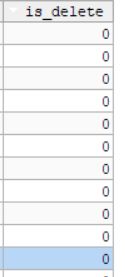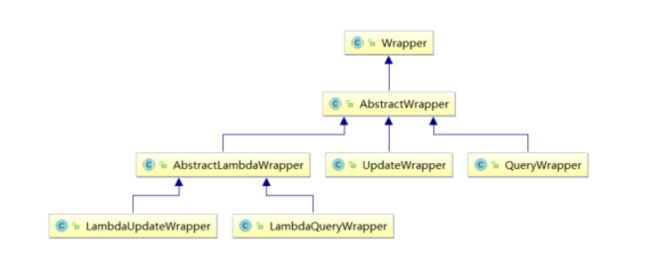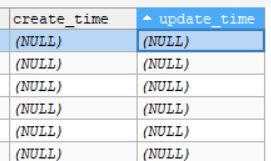MyBatisPlus
MyBatis-Plus
一、MyBatis-Plus 简介
官方文档帮助文档: 简介 | MyBatis-Plus (baomidou.com)
MyBatis-Plus (opens new window)(简称 MP)是一个 MyBatis (opens new window)的增强工具,在 MyBatis 的基础上只做增强不做改变,为简化开发、提高效率而生。
MyBatis-Plus 提供了 通用 mapper 接口 和 service ,不需要写sql 语句,直接生成 sql 语句。
特性
- 无侵入:只做增强不做改变,引入它不会对现有工程产生影响,如丝般顺滑
- 损耗小:启动即会自动注入基本 CURD,性能基本无损耗,直接面向对象操作
- 强大的 CRUD 操作:内置通用 Mapper、通用 Service,仅仅通过少量配置即可实现单表大部分 CRUD 操作,更有强大的条件构造器,满足各类使用需求
- 支持 Lambda 形式调用:通过 Lambda 表达式,方便的编写各类查询条件,无需再担心字段写错
- 支持主键自动生成:支持多达 4 种主键策略(内含分布式唯一 ID 生成器 - Sequence),可自由配置,完美解决主键问题
- 支持 ActiveRecord 模式:支持 ActiveRecord 形式调用,实体类只需继承 Model 类即可进行强大的 CRUD 操作
- 支持自定义全局通用操作:支持全局通用方法注入( Write once, use anywhere )
- 内置代码生成器:采用代码或者 Maven 插件可快速生成 Mapper 、 Model 、 Service 、 Controller 层代码,支持模板引擎,更有超多自定义配置等您来使用
- 内置分页插件:基于 MyBatis 物理分页,开发者无需关心具体操作,配置好插件之后,写分页等同于普通 List 查询
- 分页插件支持多种数据库:支持 MySQL、MariaDB、Oracle、DB2、H2、HSQL、SQLite、Postgre、SQLServer 等多种数据库
- 内置性能分析插件:可输出 SQL 语句以及其执行时间,建议开发测试时启用该功能,能快速揪出慢查询
- 内置全局拦截插件:提供全表 delete 、 update 操作智能分析阻断,也可自定义拦截规则,预防误操作
支持数据库
任何能使用
MyBatis进行 CRUD, 并且支持标准 SQL 的数据库,具体支持情况如下,如果不在下列表查看分页部分教程 PR 您的支持。
- MySQL,Oracle,DB2,H2,HSQL,SQLite,PostgreSQL,SQLServer,Phoenix,Gauss ,ClickHouse,Sybase,OceanBase,Firebird,Cubrid,Goldilocks,csiidb
- 达梦数据库,虚谷数据库,人大金仓数据库,南大通用(华库)数据库,南大通用数据库,神通数据库,瀚高数据库
框架结构
-
右边部分是 MyBatis-Plus 的场景,包含了四种jar包。
-
mybatis-plus 操作数据库中的表是由实体类决定的,字段名是由实体类中的属性决定的。
二、MyBatis-Plus 入门案例
a、引入mybatis-plus依赖
<dependency>
<groupId>com.baomidougroupId>
<artifactId>mybatis-plus-boot-starterartifactId>
<version>3.5.1version>
dependency>
b、使用 SpringBoot自带的数据源 com.zaxxer.hikari.HikariDataSource 也行,使用Druid数据源也可以
<dependency>
<groupId>com.alibabagroupId>
<artifactId>druid-spring-boot-starterartifactId>
<version>1.2.8version>
dependency>
c、配置数据库信息
spring:
datasource:
driver-class-name: com.mysql.jdbc.Driver
url: jdbc:mysql://localhost:3306/test
password: root
username: root
type: com.alibaba.druid.pool.DruidDataSource
d、创建实体类
@Data
//MyBatis-Plus自动根据实体类小写去对应数据库中的表。可以通过 @TableName 指定表名
@TableName("t_user")
public class User {
private Long id ;
private String userName ;
private String password ;
private String realName ;
}
e、mapper接口
public interface UserMapper extends BaseMapper<User> {
//不需要编写 sql 方法,直接继承 BaseMapper 。
}
f、主程序中【配置类上】,配置 Mapper接口扫描【或者在 mapper 接口上加上 @Mapper 注解】
//扫描mapper包下的所有mapper接口
@MapperScan("com.example.mapper")
g、测试
class MybatisPlusApplicationTests {
@Autowired
//userMapper 会报错
//运行时是没问题,因为 在 SpringBoot 中默认接口是无法实例化的。但实际上 mapper 交给了 动态代理类了。
private UserMapper userMapper ;
@Test
@DisplayName("查询")
void contextLoads() {
//queryWrapper: 条件构造器,如果没有条件就 null
List<User> users = userMapper.selectList(null);
for (User user : users) {
System.out.println(user);
}
}
}
h、增加日志功能
mybatis-plus:
configuration:
map-underscore-to-camel-case: false #不使用驼峰命名转换。默认是开启的。
# 开启日志功能
log-impl: org.apache.ibatis.logging.stdout.StdOutImpl
注意:
mybatis 会自动将实体类中的属性名转换为符合数据库的字段名
比如:属性名= userName ====> 自动转换为:user_name
如果你数据库该字段名为 userName 是会报错的。
Cause: com.mysql.jdbc.exceptions.jdbc4.MySQLSyntaxErrorException: Unknown column ‘user_name’ in ‘field list’
三、实现增删改查的基本功能
1、增加
BaseMapper 里提供的方法:
/**
* 插入一条记录
*
* @param entity 实体对象
*/
int insert(T entity);
直接调用即可
@Test
@DisplayName("增加")
void test_insert() {
//INSERT INTO t_user ( id, userName, password, realName ) VALUES ( ?, ?, ?, ? )
int res = userMapper.insert(new User(null, "markbolo", "0000", "马克波罗"));
//断言
//id = 1504988968188436481 是通过雪花算法生成的iD
Assertions.assertEquals(1,res);
}
2、删除
/**
* 根据 ID 删除
*
* @param id 主键ID
*/
int deleteById(Serializable id);
/**
* 根据 map 集合 条件,删除记录
*
* @param columnMap 表字段 map 对象
*/
int deleteByMap(@Param(Constants.COLUMN_MAP) Map<String, Object> columnMap);
/**
* 删除(根据ID或实体 批量删除)
*
* @param idList 主键ID列表或实体列表(不能为 null 以及 empty)
*/
int deleteBatchIds(@Param(Constants.COLLECTION) Collection<?> idList);
@Test
@DisplayName("根据ID删除")
void test_deleteById() {
// DELETE FROM t_user WHERE id=?
int res = userMapper.deleteById(1504988968188436481L); //超出 int 类型范围,加个 L 表示long类型
//断言
Assertions.assertEquals(1,res);
}
@Test
@DisplayName("根据条件删除")
void test_deleteByMap() {
// DELETE FROM t_user WHERE realName = ? AND password = ?
Map<String,Object> map = new HashMap<>();
//将查询条件封装到map集合中
map.put("realName","老五");
map.put("password","0000");
int res = userMapper.deleteByMap(map);
//断言
Assertions.assertEquals(1,res);
}
@Test
@DisplayName("根据ID批量删除")
void test_deleteBatch() {
// DELETE FROM t_user WHERE realName = ? AND password = ?
List<Long> list = Arrays.asList(1504988968188436482L, 1504988968188436483L, 1504988968188436484L);//转换成一个list集合
int res = userMapper.deleteBatchIds(list);
//断言
Assertions.assertEquals(3,res);
}
ID 是通过雪花算法生成的 long 类型。
3、修改
/**
* 根据 ID 修改
*
* @param entity 实体对象
*/
int updateById(@Param(Constants.ENTITY) T entity);
@Test
@DisplayName("根据ID修改")
void test_updateByID() {
//UPDATE t_user SET userName=?, password=?, realName=? WHERE id=?
//根据实体类ID 进行修改
int res = userMapper.updateById(new User(1504988968188436485L,"rose","0000","rose"));
//断言
Assertions.assertEquals(1,res);
}
4、查询
@Test
@DisplayName("根据ID查询单个用户信息")
void test_selectForOne() {
//SELECT id,userName,password,realName FROM t_user WHERE id=?
User user= userMapper.selectById(23L);
System.out.println(user);
}
@Test
@DisplayName("根据ID查询多个用户信息")
void test_selectForMore() {
//SELECT id,userName,password,realName FROM t_user WHERE id IN ( ? , ? , ? )
List<Long> ids = Arrays.asList(23L, 35L, 30L);
List<User> users = userMapper.selectBatchIds(ids);
System.out.println(users);
}
@Test
@DisplayName("根据map和查询用户信息")
void test_selectForMap() {
//SELECT id,userName,password,realName FROM t_user WHERE id = ? AND userName = ?
Map<String,Object> map = new HashMap<>();
//将查询条件封装在 map集合中
map.put("userName","rose");
map.put("id",1504988968188436485L);
List<User> users = userMapper.selectByMap(map);
System.out.println(users);
}
@Test
@DisplayName("查询所有用户信息")
void test_selectForList() {
//SELECT id,userName,password,realName FROM t_user
List<User> users = userMapper.selectList(null);
System.out.println(users);
}
如果 baseMapper 提供的方法不满足需求,可以自定义sql。
和 mybatis 一样。在 mapper 接口写 sql 方法。mapper 映射文件里 sql 语句。
和 mybatis 不一样的是,在SpringBoot 中 mapper映射文件有默认位置: classpath*:/mapper/**/*.xml
也可以通过:mybatis-plus-mapper-locations: 指定mapper映射文件位置
四、Service 接口
说明:
- 通用 Service CRUD 封装 IService 接口,进一步封装 CRUD 采用
get 查询单行remove 删除list 查询集合save 插入page 分页前缀命名方式区分Mapper层避免混淆。 在 mapper 中: select 查询,delete 删除,insert 增加 ,update 修改- 泛型
T为任意实体对象 - 建议如果存在自定义通用 Service 方法的可能,建议自己创建
service接口 和实现类 ,继承 MyBatis-Plus 提供的IService和ServiceImpl - 对象
Wrapper为 条件构造器
MyBatis-Plus 提供了 service 接口 和 实现类,但是为了满足开发需要,
public interface UserService extends IService<User> {
// IService :泛型为 实体类类型。
}
public class UserServiceImpl extends ServiceImpl<UserMapper, User> implements UserService {
// ServiceImpl : MyBatis-Plus 提供的 IService 的实现类。
//第一个泛型:mapper 接口
//第二个泛型“:实体类对象
}
IService 提供的 批量增加功能:
@Autowired
UserService userService ;
@Test
@DisplayName("批量增加")
void test_saveBatch() {
List<User> users = Arrays.asList(
new User(null, "aaa", "000", "aaa"),
new User(null, "bbb", "000", "bbb"),
new User(null, "ccc", "000", "ccc"));
//参数是一个list集合
boolean saveBatch = userService.saveBatch(users);
System.out.println(saveBatch);
}
五、MyBatis-Plus 中常用的注解
1、@TableName : MyBatis-Plus 默认根据实体类名找数据库中的表,如果不一致,可通过 此注解指定表名。
@TableName("t_user") : 表示对应数据库表名为:t_user
还可以通过 全局配置 指定表名前缀:
# 设置数据库表名的前缀
mybatis-plus:
global-config:
db-config:
table-prefix: t_user
2、@TableId : 标注在属性上,将该属性对应的 字段名 看做主键。
-
value 属性:
@TableId(value = " ") 指定 主键 id 名 -
type 属性 :主键生成策略
- AUTO
- 自增,使用条件:数据库中的主键也必须设置为 自增。
- NONE
- 未设置生成策略
- INPUT
- 自己输入
- ASSIGN_ID
- 雪花算法,分配ID。当 ID 填 null 的时候,自动使用该策略
- ASSIGN_UUID
- 分配 UUID
- AUTO
可以通过全局配置设置所有主键为自增:
mybatis-plus:
global-config:
db-config:
# 设置全局 id 自增功能
id-type: auto
IdType 源码:
@Getter
public enum IdType {
/**
* 数据库ID自增
* 该类型请确保数据库设置了 ID自增 否则无效
*/
AUTO(0),
/**
* 该类型为未设置主键类型(注解里等于跟随全局,全局里约等于 INPUT)
*/
NONE(1),
/**
* 用户输入ID
* 该类型可以通过自己注册自动填充插件进行填充
*/
INPUT(2),
/* 以下3种类型、只有当插入对象ID 为空,才自动填充。 */
/**
* 分配ID (主键类型为number或string),
* 默认实现类 {@link com.baomidou.mybatisplus.core.incrementer.DefaultIdentifierGenerator}(雪花算法)
*
* @since 3.3.0
*/
ASSIGN_ID(3),
/**
* 分配UUID (主键类型为 string)
* 默认实现类 {@link com.baomidou.mybatisplus.core.incrementer.DefaultIdentifierGenerator}(UUID.replace("-",""))
*/
ASSIGN_UUID(4);
private final int key;
IdType(int key) {
this.key = key;
}
}
3、**@TableField ** : 设置属性名对应的字段名。
@TableField(value = "user_name") 当属性名和字段名不一致时,可通过 @TableField 注解指定字段名。
4、@TableLogic :
- 物理删除:真实删除,将对应数据从数据库中删除,之后查询不到此条被删除的数据
- 逻辑删除:假删除,将对应数据中代表是否被删除字段的状态修改为“被删除状态”,之后在数据库 中仍旧能看到此条数据记录
- 使用场景:可以进行数据恢复
在数据库中增加 is_delete 字段,用来表示删除状态。 mp默认 1 表示逻辑删除 0 表示未删除,可通过配置修改
mybatis-plus:
global-config:
db-config:
logic-delete-value: 1 # 逻辑已删除值(默认为 1)
logic-not-delete-value: 0 # 逻辑未删除值(默认为 0)
//逻辑删除语句,其实是修改语句,将删除的数据的删除状态 更改为 1
UPDATE t_user SET is_delete=1 WHERE uid IN ( ? , ? , ? ) AND is_delete=0
数据库中仍然有删除后的数据,但是使用查询语句 是查询不出来的。
在执行查询语句时,会增加一个is_delete = 0 的查询条件
六、条件构造器 Wrapper
- Wrapper : 顶级类构造器
- AbstractLambdaWrapper : 支持 lambda 表达式
- LambdaUpdateWrapper : 使用 lambda 进行修改的条件构造器
- LambdaQueryWrapper : 使用 lambda 进行查询的条件构造器
- UpdateWrapper : 修改 的条件构造器
- QueryWrapper : 查询 的条件构造器,删除 也用 QueryWrapper
在使用条件构造器时,默认用 and 拼接
6.1 QueryWrapper
1、组装条件查询
@Test
@DisplayName("条件构造器")
public void test01(){
//比如:需要查询 用户名带 a 并且 密码不为空 的用户信息
QueryWrapper<User> queryWrapper = new QueryWrapper<>();
queryWrapper.like("user_name","a").isNotNull("password");
List<User> list = userService.list(queryWrapper);
list.forEach(System.out::println);
}
条件构造器支持链式增加,并且方法名的意思和数据库中的 关键字 的意思一样。
参考: 条件构造器 | MyBatis-Plus (baomidou.com)
2、组装排序条件
@Test
@DisplayName("组装排序条件")
public void test02(){
//比如:按照id的降序查询
QueryWrapper<User> queryWrapper = new QueryWrapper<>();
queryWrapper.orderByDesc("uid");
// queryWrapper.orderByAsc("uid"); 升序
List<User> list = userService.list(queryWrapper);
list.forEach(System.out::println);
}
3、组装删除条件
@Test
@DisplayName("组装删除条件")
public void test03(){
//比如:删除密码为空的数据
QueryWrapper<User> queryWrapper = new QueryWrapper<>();
queryWrapper.isNull("password");
boolean remove = userService.remove(queryWrapper);
System.out.println(remove);
}
4、组装修改条件
@Test
@DisplayName("组装修改条件--queryWrapper")
public void test04(){
//比如:修改 用户名中带有 a 或者 密码为 0000 的真实姓名为 小明
QueryWrapper<User> queryWrapper = new QueryWrapper<>();
queryWrapper.like("user_name","a")
//默认组装是由 and 拼接的。 使用 or() 用 or 拼接
.or()
.eq("password","0000");
//update() 中有俩个参数:
//1、实体类 用来修改信息
//2、queryWrapper:用来获取可以修改的用户信息。
User user = new User();
user.setUserName("小明");
boolean update = userService.update(user, queryWrapper);
System.out.println(update);
}
5、条件优先级
使用 and(Consumer consumer) 方法,会将 ( ) 里面的条件用 括号 括起来。提高优先级。
里面的 参数就是一个 wrapper 。
以下代码执行的 sql 语句:
UPDATE t_user SET real_name=? WHERE is_delete=0 AND (user_name LIKE ? AND (password = ? OR real_name IS NULL))
@Test
@DisplayName("条件优先级")
public void test05(){
//比如:修改 1、用户名中带有 a 并且 2、(密码为 0000 或者 真实姓名为 null ) 的真实姓名为 小红
QueryWrapper<User> queryWrapper = new QueryWrapper<>();
queryWrapper.like("user_name","a")
//MyBaits中的 lambda表达式是优先执行的。
.and(i -> i.eq("password","0000").or().isNull("real_name"));
User user = new User();
user.setRealName("小红");
boolean update = userService.update(user, queryWrapper);
System.out.println(update);
}
6、组装 select 子句
目前位置默认查询出来的字段是所有字段,如何查询出来为指定的字段
QueryWrapper
@Test
@DisplayName("组装 select 子句")
public void test06(){
QueryWrapper<User> queryWrapper = new QueryWrapper<>();
//指定查询字段
queryWrapper.select("user_name","real_name");
List<Map<String, Object>> maps = userService.listMaps(queryWrapper);
maps.forEach(System.out::println);
}
6.2 UpdateWrapper
前面在进行修改时: 使用 queryWrapper 用来设置修改条件,实体类用来设置修改内容
updateWrapper : 既可以 用来设置 修改条件,又可以设置修改的内容。
@Test
@DisplayName("组装修改条件 --- updateWrapper ")
public void test08(){
比如:修改 用户名中带有 a 或者 密码为 0000 的真实姓名为 小明
UpdateWrapper<User> userUpdateWrapper = new UpdateWrapper<>();
//修改条件
userUpdateWrapper.like("user_name","a").or().eq("password","0000");
//进行修改
userUpdateWrapper.set("real_name","小明");
boolean update = userService.update(userUpdateWrapper);
System.out.println(update);
}
6.3 使用condition 组装条件
下面模拟以下 在开发中的场景:
@Test
@DisplayName("condition")
public void test09(){
//假设以下条件参数是从浏览器传送过来的。
String userName = "小明" ;
String password = "0000" ;
String realName = "";
//进行查询。但是不需要将 空的参数作为查询条件,就需要增加判断
QueryWrapper<User> queryWrapper = new QueryWrapper<>();
if (StringUtils.isNotBlank(userName)){
//如果userName不为空,就作为查询条件
queryWrapper.like("user_name",userName) ;
}
if (StringUtils.isNotBlank(password)){
//如果 password 不为空,就作为查询条件
queryWrapper.like("password",password) ;
}
if (StringUtils.isNotBlank(realName)){
//如果 realName 不为空,就作为查询条件
queryWrapper.like("real_name",realName) ;
}
List<User> list = userService.list(queryWrapper);
list.forEach(System.out::println);
}
这样判断是非常麻烦的,可以通过 condition 这个参数用来判断。
每一个 方法里都会提供一个 condition 参数,这个参数就是用来 判断该条件是否组装在sql语句后面
@Test
@DisplayName("condition")
public void test010(){
//假设以下参数是从浏览器传送过来的。
String userName = "小明" ;
String password = "0000" ;
String realName = "";
QueryWrapper<User> queryWrapper = new QueryWrapper<>();
//第一个参数:condition : 组装条件
//第二个参数:字段名
//第三个参数:条件
queryWrapper.like(StringUtils.isNotBlank(userName),"user_name",userName)
.like(StringUtils.isNotBlank(password),"password",password)
.like(StringUtils.isNotBlank(realName),"real_name",realName) ;
List<User> list = userService.list(queryWrapper);
list.forEach(System.out::println);
}
七、MyBatis-Plus 插件
1、分页插件
开启分页功能:
//开启分页功能
@Bean
public MybatisPlusInterceptor mybatisPlusInterceptor (){
MybatisPlusInterceptor interceptor = new MybatisPlusInterceptor() ;
interceptor.addInnerInterceptor(new PaginationInnerInterceptor(DbType.MYSQL));
return interceptor ;
}
分页使用:
@Test
public void test01(){
// limit start,size start :表示起始索引,size:显示条数
//current : 当前页码 。 (当前页码 -1) * size = start
// size :每页显示条数
Page<User> page = new Page<>(1,3);
//查询并且分页
userService.page(page);
System.out.println(page);
}
page 中的属性:
records : 每页的数据
pages : 总页数
total : 总记录数
current : 当前页码
size :每页显示条数
hasNext :是否有下一页
hasPrevious : 是否有上一页
2、乐观锁和悲观锁
有这样一个场景:
一件商品,成本价是80元,售价是100元。老板先是通知小李,说你去把
商品价格增加50元。小李正在玩游戏,耽搁了一个小时。正好一个小时后,老板觉得商品价格增加到150元,价格太
高,可能会影响销量。又通知小王,你把
商品价格降低30元。此时,
小李和小王同时操作商品后台系统。小李操作的时候,系统先取出商品价格100元;小王也在操作,取出的商品价格也是100元。小李将价格加了50元,并将100+50=150元存入了数据
库;小王将商品减了30元,并将100-30=70元存入了数据库。是的,如果没有锁,小李的操作就
完全被小王的覆盖了。
现在商品价格是70元,比成本价低10元。几分钟后,这个商品很快出售了1千多件商品,老板亏1
万多
也就是说当俩个人同时操作数据库时,都是对同一条数据同时进行的修改。和 银行取钱的场景类似
上面的故事
如果是乐观锁,小王保存价格前,会检查下价格是否被人修改过了。如果被修改过了,则重新取出的被修改后的价格,150元,这样他会将120元存入数据库。
如果是悲观锁,小李取出数据后,小王只能等小李操作完之后,才能对价格进行操作,也会保证
最终的价格是120元。
模拟修改冲突:
@Test
public void test11(){
//小李查询价格
Product productLi = productMapper.selectById(1);
System.out.println("小李查询的价格 :" + productLi.getPrice());
//小王查询价格
Product productWang = productMapper.selectById(1);
System.out.println("小王查询的价格 :" + productWang.getPrice());
//小王和小李获取的价格都是 100
//小李修改价格 150
productLi.setPrice(productLi.getPrice()+50);
productMapper.updateById(productLi);
System.out.println("小李修改完价格:" + productLi.getPrice());
//小王修改价格 70 小王修改的价格会覆盖小李修改的价格
productWang.setPrice(productWang.getPrice()-30);
productMapper.updateById(productWang);
System.out.println("小王修改完价格:" + productWang.getPrice());
//老板查询价格 70
Product productBoss = productMapper.selectById(1);
System.out.println("老板查询的价格:" + productBoss.getPrice());
//
}
在老板查询的时候,商品价格为 70 ,小王的修改已经覆盖了小李的修改。
乐观锁实现流程 :
实现乐观锁一般是在数据库中 增加
version字段,表示版本号,在修改数据前获取版本号。修改数据时不仅要修改数据,还要修改版本号。【version+1】比如:小王和小李第一次获取价格和版本号时,
price=100, version=1小李在修改数据时,先获取版本号=1,和第一次获取价格时的版本号一致,就可以修改:
price 100 + 50 = 150,version: 1+1=2配小王在修改数据时,先获取
version = 2【因为小李在修改时将版本号增加了 1 】,由于版本号和之前获取的不一致,所以小王的修改操作就不会成功。最后price=150
增加乐观锁插件 :
a、在属性上增加 @Version 注解
@Version //表示乐观锁版本号字段
private Integer version ;
b、增加乐观锁插件
@Bean
public MybatisPlusInterceptor mybatisPlusInterceptor (){
MybatisPlusInterceptor interceptor = new MybatisPlusInterceptor() ;
//增加分页插件
interceptor.addInnerInterceptor(new PaginationInnerInterceptor(DbType.MYSQL));
//增加乐观锁插件
interceptor.addInnerInterceptor(new OptimisticLockerInnerInterceptor());
return interceptor ;
}
最后 老板查询的价格:150.0
因为在小王想要修改价格的时候,获取到的版本号和第一次获取的时候不一致,所以并没有修改成功。
优化修改流程,使小王的操作成功:
在小王进行修改时,修改失败后在重新查询,修改价格。
@Test
public void test11(){
//小李查询价格
Product productLi = productMapper.selectById(1);
System.out.println("小李查询的价格 :" + productLi.getPrice());
//小王查询价格
Product productWang = productMapper.selectById(1);
System.out.println("小王查询的价格 :" + productWang.getPrice());
//小王和小李获取的价格都是 100
//小李修改价格 150
productLi.setPrice(productLi.getPrice()+50);
productMapper.updateById(productLi);
System.out.println("小李修改完价格:" + productLi.getPrice());
//小王修改价格 70 小王修改的价格会覆盖小李修改的价格
productWang.setPrice(productWang.getPrice()-30);
int res = productMapper.updateById(productWang);
if (res ==0 ){
//结果=0,说明小王操作失败。就重新查新,重新修改
Product newProduct = productMapper.selectById(1);
newProduct.setPrice(newProduct.getPrice() - 30);
productMapper.updateById(newProduct) ;
}
System.out.println("小王修改完价格:" + productWang.getPrice());
//老板查询价格
Product productBoss = productMapper.selectById(1);
System.out.println("老板查询的价格:" + productBoss.getPrice());
}
因此乐观锁在修改之前要执行一次查询操作!!!
八、通用枚举
在表中有些字段值是固定的,比如性别:只有 男和女,这时候就可以通过枚举来实现。
@EnumValue + type-enums-package 实现该功能
增加枚举类:
@Getter
public enum SexEnum {
MALE(1, "男"),
FEMALE(2, "女");
//将注解标识的属性值存储到数据库。
@EnumValue
private Integer sex;
private String sexName;
SexEnum(Integer sex, String sexName) {
this.sex = sex;
this.sexName = sexName;
}
}
配置全局文件扫描枚举:
mybatis-plus:
type-enums-package: com.example.enums
测试:
@Test
public void test01(){
User user = new User();
user.setUserName("lisi");
user.setRealName("李四");
user.setPassword("0000");
//使用枚举赋值
user.setSex(SexEnum.MALE);
int insert = userMapper.insert(user);
System.out.println(insert);
}
九、代码生成器
a、引入依赖
<dependency>
<groupId>com.baomidougroupId>
<artifactId>mybatis-plus-generatorartifactId>
<version>3.5.2version>
dependency>
<dependency>
<groupId>org.freemarkergroupId>
<artifactId>freemarkerartifactId>
<version>2.3.30version>
dependency>
b、自动生成代码,可直接拷贝
FastAutoGenerator.create(
"jdbc:mysql://localhost:3306/book",
"root",
"root")
.globalConfig(builder -> {
builder.author("yang") // 设置作者
.enableSwagger() // 开启 swagger 模式
.fileOverride() // 覆盖已生成文件
.outputDir("C://user//"); // 指定输出目录
})
.packageConfig(builder -> {
builder.parent("com.example") // 设置父包名
.moduleName("") // 设置父包模块名
.pathInfo(Collections.singletonMap(OutputFile.xml, "C://user//")); // 设置mapperXml生成路径
})
.strategyConfig(builder -> {
builder.addInclude("t_book") // 设置需要生成的表名
.addTablePrefix("t_", "c_"); // 设置过滤表前缀
})
.templateEngine(new FreemarkerTemplateEngine()) // 使用Freemarker引擎模板,默认的是Velocity引擎模板
.execute();
十、多数据源
适用于多种场景:纯粹多库、 读写分离、 一主多从、 混合模式等
a、引入依赖
<dependency>
<groupId>com.baomidougroupId>
<artifactId>dynamic-datasource-spring-boot-starterartifactId>
<version>3.5.0version>
dependency>
b、增加配置
spring:
datasource:
dynamic:
primary: master #设置默认的数据源或者数据源组,默认值即为master
strict: false #严格匹配数据源,默认false. true未匹配到指定数据源时抛异常,false使用默认数据源
datasource:
master:
url: jdbc:mysql://localhost:3306/test
username: root
password: root
driver-class-name: com.mysql.jdbc.Driver # 3.2.0开始支持SPI可省略此配置
slave_1:
url: jdbc:mysql://localhost:3306/book
username: root
password: root
driver-class-name: com.mysql.jdbc.Driver
c、只需要在 service 使用 @DS() 注解指定数据源即可。
@DS 可以标注在方法上或者类上【就近原则,方法优先】
@Service
@DS("master") //指定master数据源
public class UserServiceImpl extends ServiceImpl<UserMapper, User> implements IUserService {
}
@Service
@DS("slave_1") //指定数据源
public class BookServiceImpl extends ServiceImpl<BookMapper, Book> implements IBookService {
}
十一、MyBatis-X 插件
IDEA里下载插件: MyBatis-X 插件
自动生成实体类,mapper 接口…
- 建立数据库连接
- 配置
十二、自动填充
首先 表中增加俩个字段,创建时间以及修改时间。实体类添加这俩个属性
@Test
@DisplayName("演示自动填入")
void autoInput(){
User user = new User();
user.setName("zs");
user.setAge(20);
user.setEmail("[email protected]");
// 手动设置时间
// user.setCreateTime(new Date());
// user.setUpdateTime(new Date());
int insert = userMapper.insert(user);
System.out.println(insert);
}
此时如果我们想要填入 create_time 这个字段,需要我们手动去 填入。
而自动填入可以自动帮我们填入时间信息。
官网: 自动填充功能 | MyBatis-Plus (baomidou.com)
步骤:
- 为自动填充的字段加上 @TableFIeld 注解、
@Data public class User { @TableId(type = IdType.ASSIGN_ID) private Long id; private String name; private Integer age; private String email; // 设置自动填充字段 @TableField(fill = FieldFill.INSERT) private Date createTime ; @TableField(fill = FieldFill.UPDATE) private Date UpdateTime; }
- 创建类 实现
MetaObjectHandler接口,并重写方法。@Component public class AutoInputConfig implements MetaObjectHandler { @Override public void insertFill(MetaObject metaObject) { // 增加时自动填充 // metaObject 原数据对象 // createTime 自动填充的字段名 // Date.class 填充内容的类型 // new Date() 填充的内容 this.strictInsertFill(metaObject,"createTime", Date.class,new Date()); this.strictInsertFill(metaObject,"updateTime", Date.class,new Date()); } @Override public void updateFill(MetaObject metaObject) { // 修改时自动填充 this.strictUpdateFill(metaObject,"updateTime", Date.class,new Date()); } }不要忘记注入到容器中~
- 测试
@Test @DisplayName("演示自动填入") void autoInput(){ User user = new User(); // user.setId(1554755038218317825L); user.setName("ty"); user.setAge(01111); user.setEmail("[email protected]"); // user.setCreateTime(new Date()); // user.setUpdateTime(new Date()); int insert = userMapper.insert(user); // int insert = userMapper.updateById(user); System.out.println(insert); }测试结果 :
注意事项:
- 填充原理是直接给
entity的属性设置值!!!- 注解则是指定该属性在对应情况下必有值,如果无值则入库会是
nullMetaObjectHandler提供的默认方法的策略均为:如果属性有值则不覆盖,如果填充值为null则不填充- 字段必须声明
TableField注解,属性fill选择对应策略,该声明告知Mybatis-Plus需要预留注入SQL字段- 填充处理器
MyMetaObjectHandler在 Spring Boot 中需要声明@Component或@Bean注入- 要想根据注解
FieldFill.xxx和字段名以及字段类型来区分必须使用父类的strictInsertFill或者strictUpdateFill方法- 不需要根据任何来区分可以使用父类的
fillStrategy方法- update(T t,Wrapper updateWrapper)时t不能为空,否则自动填充失效
十三、MyBatis-Plus 性能分析
该功能依赖
p6spy组件,完美的输出打印 SQL 及执行时长3.1.0以上版本
- 增加依赖
<dependency>
<groupId>p6spygroupId>
<artifactId>p6spyartifactId>
<version>3.9.1version>
dependency>
- 修改原有的数据库驱动以及 url
spring: datasource: # 指明 sql 语句分析驱动 driver-class-name: com.p6spy.engine.spy.P6SpyDriver username: root password: 1234 url: jdbc:p6spy:mysql://localhost:3306/mybatis_plus?serverTimezone=GMT%2B8
- 在 resource 文件夹下创建 spy.properties 文件
#3.2.1以上使用
modulelist=com.baomidou.mybatisplus.extension.p6spy.MybatisPlusLogFactory,com.p6spy.engine.outage.P6OutageFactory
#3.2.1以下使用或者不配置
#modulelist=com.p6spy.engine.logging.P6LogFactory,com.p6spy.engine.outage.P6OutageFactory
# 自定义日志打印
logMessageFormat=com.baomidou.mybatisplus.extension.p6spy.P6SpyLogger
#日志输出到控制台
appender=com.baomidou.mybatisplus.extension.p6spy.StdoutLogger
# 使用日志系统记录 sql
#appender=com.p6spy.engine.spy.appender.Slf4JLogger
# 设置 p6spy driver 代理
deregisterdrivers=true
# 取消JDBC URL前缀
useprefix=true
# 配置记录 Log 例外,可去掉的结果集有error,info,batch,debug,statement,commit,rollback,result,resultset.
excludecategories=info,debug,result,commit,resultset
# 日期格式
dateformat=yyyy-MM-dd HH:mm:ss
# 实际驱动可多个
#driverlist=org.h2.Driver
# 是否开启慢SQL记录
outagedetection=true
# 慢SQL记录标准 2 秒
outagedetectioninterval=2
Consume Time : SQL 语句执行时间







